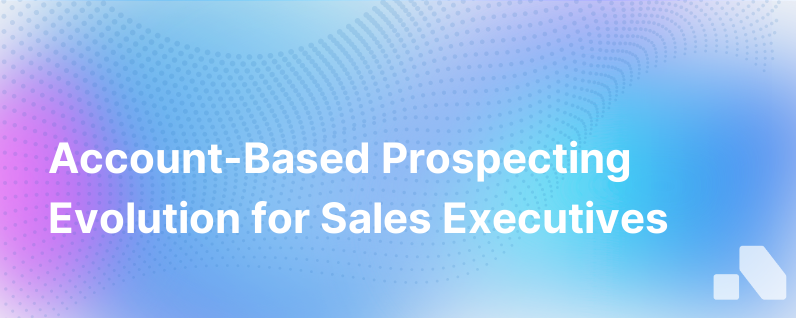
The B2B sales landscape is more competitive than ever, so standing out to leads when you're prospecting requires both strategic planning and a focus on personal relationships. Account based marketing (ABM) has been around for decades, but is recently gaining attention as a winning sales philosophy in 2024.
ABM was developed to help sales teams concentrate their resources on engaging and converting high-value accounts at a high rate by offering a personalized buyer journey. Below we explore why ABM is indispensable for high-performing B2B sales teams and how to implement it effectively in your prospecting workflows.
Why ABM Improves Strategic Prospecting
Enterprise sales cycles are notoriously long and complex, involving multiple stakeholders and requiring a series of approvals. Traditional broad-brush marketing efforts are inefficient and often fall short at pipeline generation because they cast too wide a net for leads that may never have a hope of converting. ABM, however, asks sales and marketing teams to turn their attention to accounts where opportunities for success are highest, focusing energy and resources.
The power of ABM lies in its data-driven methodology, which aligns sales and marketing teams towards common goals for account engagement, driving coherence and efficiency. This unity also strengthens your value proposition to the customer, ensuring every touchpoint they have with your brand is consistent and relevant to their needs.
Building Blocks of ABM in B2B Sales
1. Account Identification and Intelligence
The foundation of ABM is the precise selection and thorough understanding of target accounts. Identifying these involves a granular analysis of potential customers - fit with your ICP, market position, competitive landscape, and even company culture. Sales and marketing teams need to collaborate to compile a list of high-impact prospects.
2. In-depth Customer Profiling
Once your target accounts are in sight, the next step is to construct comprehensive profiles for each. This isn't limited to company information but expands into detailed personas of the decision-makers and influencers within the company. What challenges do they face? What goals do they aim to achieve? How can your solutions pivot them closer to their objectives? Aomni offers a suite of AI powered tools that make in-depth customer account research quick and easy.
3. Personalized Prospecting Engagement Strategies
With account intelligence dossiers in hand, creating personalized prospecting strategies for each account becomes a lot easier for a busy team to manage. Focus on crafting bespoke content, fine-tuning communication channels, or even developing custom solutions. It’s about nurturing these prospects with a view toward the long game, offering value every step of the way.
4. Collaborative Execution
Alignment between sales and marketing teams is crucial. Building a unified growth team ensures that messaging across channels is consistent and every stakeholder at your target account experiences a seamless engagement with your company. It also means a fluid exchange of feedback and data, allowing for real-time adjustments and refinement of strategies.
5. Metrics that Matter
In ABM, vanity metrics take a backseat to more pragmatic measures of success. Focus on account engagement metrics, win rates, sales cycle conversion speeds, average deal sizes, and overall revenue growth from each target account. These KPIs offer a clearer insight into the return on investment of your ABM efforts.
The Impact of ABM on Prospecting Outcomes
ABM has the potential to transform your B2B sales approach, resulting in:
- Increased Efficiency: By targeting fewer, more relevant accounts, your sales and marketing resources are used more effectively.
- Improved Customer Experience: Personalization leads to better customer satisfaction, driving loyalty and advocacy.
- Higher Conversion Rates and Deal Sizes: Focused efforts often lead to more closed deals of higher value.
- Streamlined Sales Cycles: Engaging the right decision-makers with the right message can quicken the sales process.
Augmenting ABM with AI
Embracing ABM can seem overwhelming, with its need for constant data analysis and personalization for each account. This is where AI platforms like Aomni come into play, simplifying ABM for B2B sales by providing actionable insights and personalized content in real-time. By leveraging tools that understand your target markets and automate account research and the creation of personalized sales content, Aomni enables sales teams to execute ABM with agility and accuracy.
Final Thoughts
Making the shift to an ABM-driven prospecting strategy may require a cultural shift within your organization, but the payoff is clear. It's a transformation that fosters smarter sales, more engaged customers, and ultimately, a healthier bottom line. In the current economic landscape, finding and holding onto high-value B2B accounts is more crucial than ever.